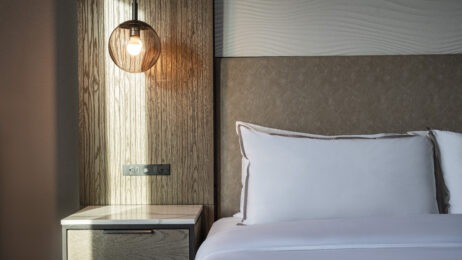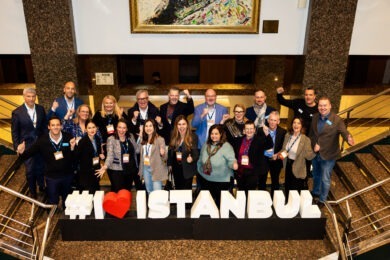On the heels of Deaf Awareness Month in September comes news that Spanish hotel chain Room Mate Hotels is offering real-time sign-language interpretation services for deaf and hard of hearing guests, according to Frommers.
The hotel is working hand-in-hand with Comunicados en Lengua de Signos to provide guests who require this service with a tablet. This enables an interpreter to help the hotel’s staff and the visitor effectively communicate with one another via live video conferencing. Room Mate intends to roll out this accommodation across all its hotels in Spain by year’s end, and to expand to the brand’s international properties in 2018, including New York, Miami and Mexico City.
Watch the video below to see how it works:
Room Mate is not the only brand in the hospitality realm to encourage communication between the hearing and deaf communities. Just last month, Uber launched a campaign to teach passengers basic signs so they can say “hello,” “thank you” and fingerspell their names to the thousands of ASL-using drivers employed by the ride-sharing company in more than 200 American cities and around the world. By tapping on a special card in the Uber feed, riders can learn to talk with their hands by way of a GIF.
Next time you're matched with a driver who is Deaf or Hard of Hearing, use these ASL phrases to #StartAConversation: https://t.co/StimdsAHRL pic.twitter.com/vzS1Q97eMO
— Uber (@Uber) September 28, 2017
Back in 2015, a video went viral of a Starbucks barista taking a customer’s drive-thru order using sign language on a screen with two-way camera. “I’ve had a passion for sign language since I first saw a teacher use it when I was in preschool, and I’ve studied ASL ever since,” barista Katie Wyble said in a press release.” “It warms my heart so much to be able to communicate with those in the deaf community.”
Photo credit: Starbucks
This August, Starbucks once again made headlines with the announcement that more than 50 deaf employees would be outfitted in green aprons with the fingerspelling of Starbucks embroidered on the front to make customers aware they communicate using ASL. Baristas at a Malaysian Starbucks store in Kuala Lumpur have been wearing similar aprons since 2016.
“People are curious and tend to look at me with more of a friendly face when they enter my store and see me in the apron,” deaf barista Katie Giles, whose brainchild this is, says. “I’ve even learned that some of my customers know a bit of sign language, which they had not used because they didn’t know I was deaf. My relationship with customers has totally changed.”




